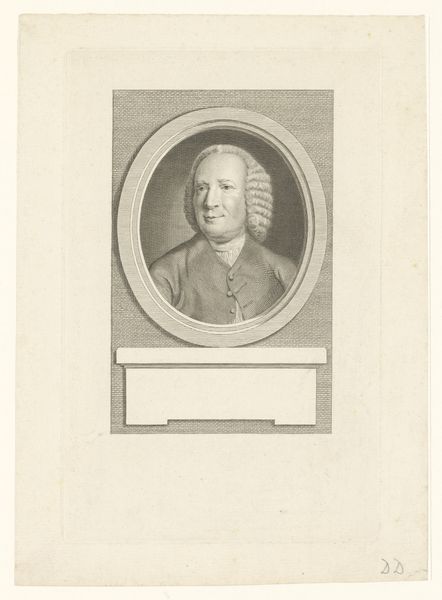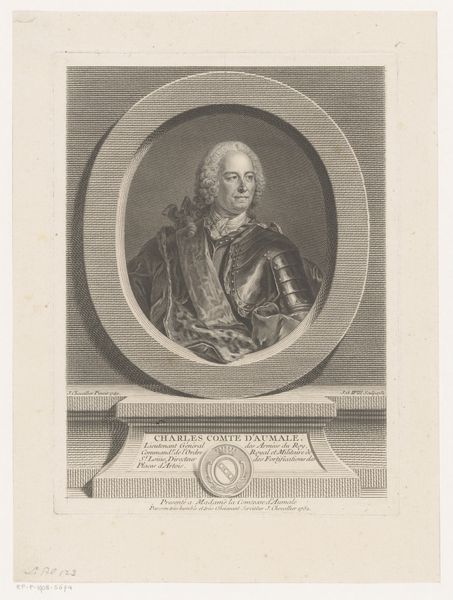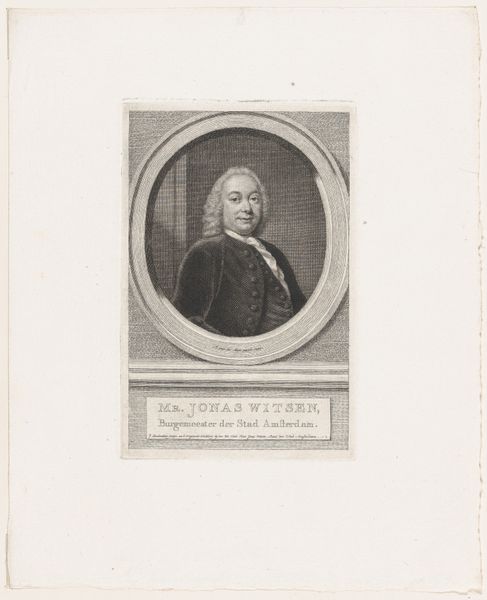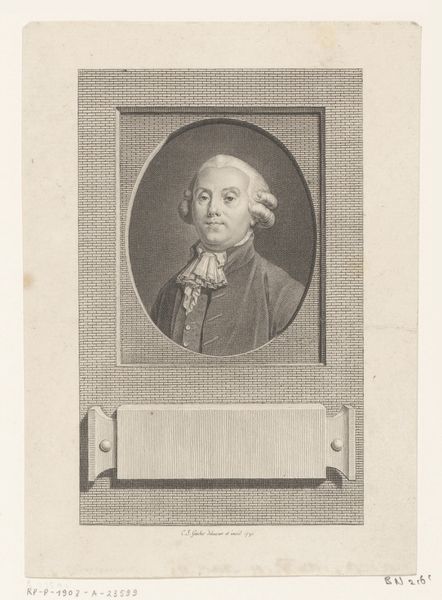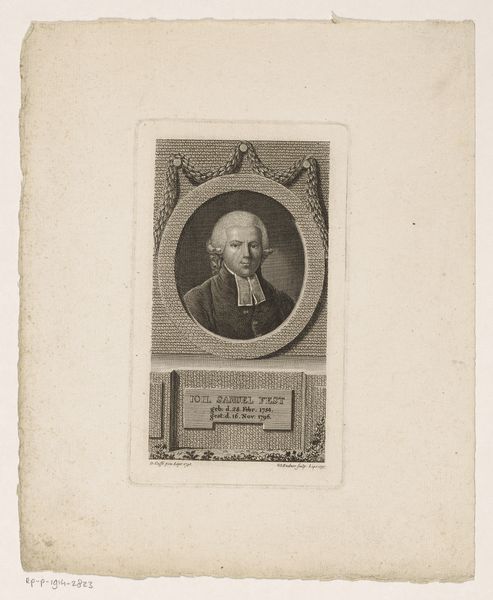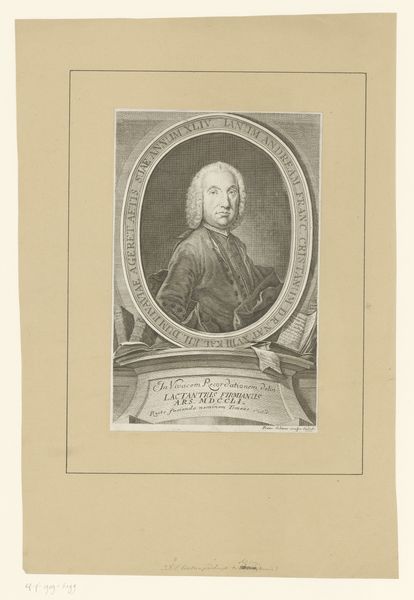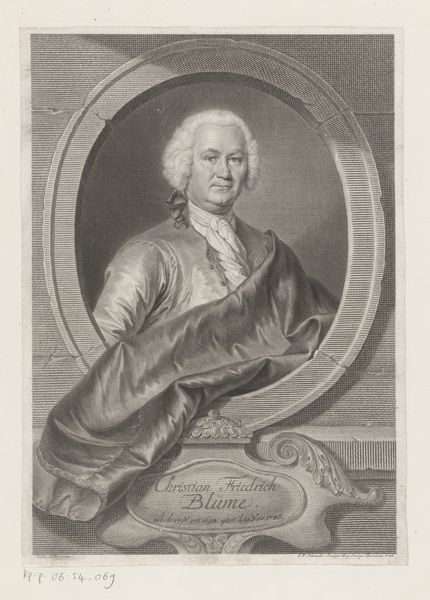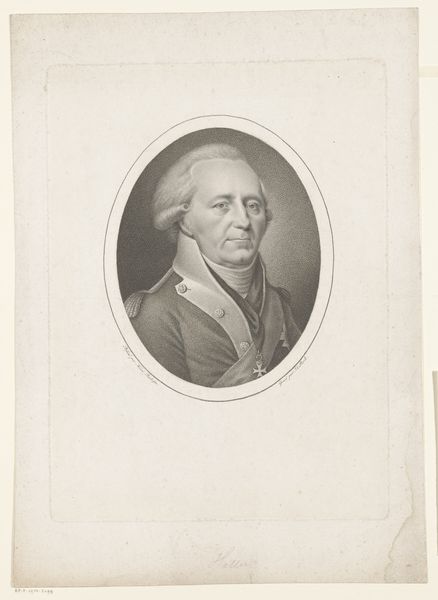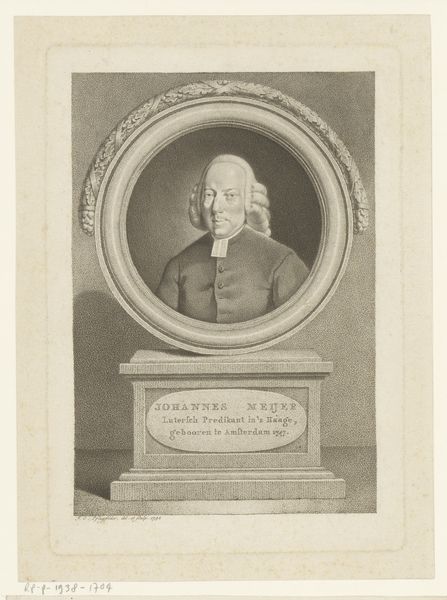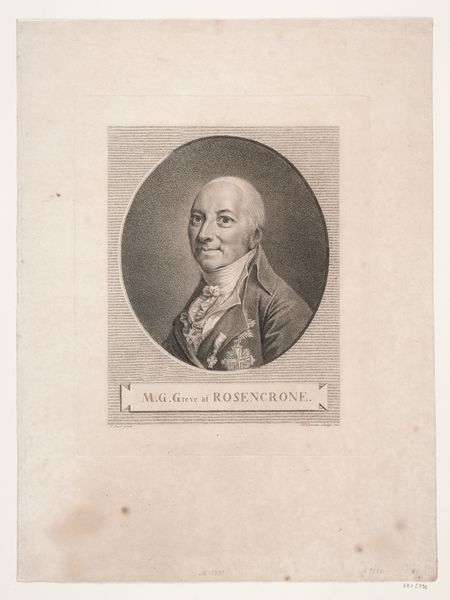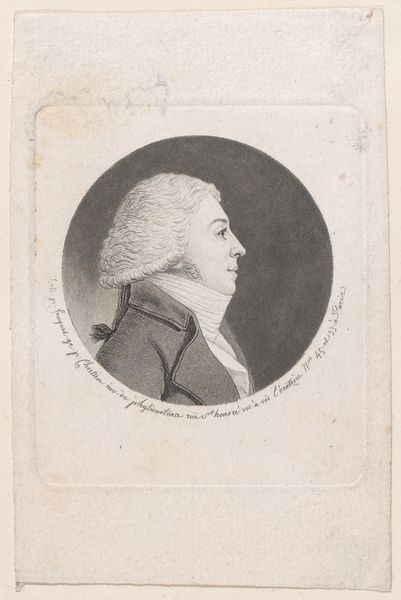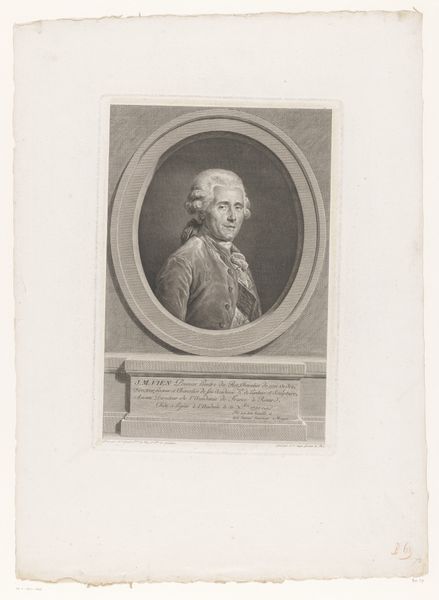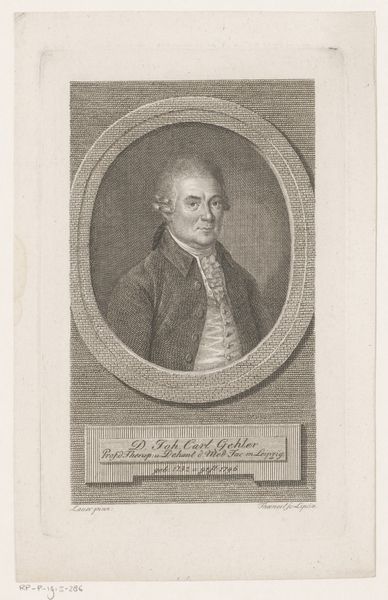
Dimensions: height 248 mm, width 184 mm
Copyright: Rijks Museum: Open Domain
Editor: Here we have Johann Georg Wille's "Portret van Henri Liebaux," created sometime between 1735 and 1808. It's a print made using etching and engraving, currently held in the Rijksmuseum. I’m immediately struck by the circular frame; it's like looking into a window onto another time. What do you see in this piece? Curator: It’s interesting how the print medium itself informs our understanding of portraiture at this time. This wasn’t simply about individual commemoration. The relatively easy duplication afforded by engraving allowed for the wider dissemination of images of important figures. It's a form of public image-making. Consider, too, the visual language borrowed from history painting – this elevates the sitter beyond a simple likeness. Why do you think that might be? Editor: Hmm, you mean, it’s more than just capturing what Henri looked like? Maybe it was about building a certain image, conveying power or respect through associations with important historical figures. It is also a type of art, as etching and engraving can take lots of practice to get correct. Curator: Precisely. Think about the context in which these prints circulated – coffee houses, salons, even personal collections. They shaped public opinion and reinforced social hierarchies. This print presents Henri within this kind of world, with its associations to politics and even a kind of “intellectual” salon life of the 18th century. Editor: So, it’s not just a portrait; it's an assertion of status within a social and intellectual network. The architecture around him as well, is representative of that network. Curator: Exactly. What’s more, the artist isn’t simply recording reality; he’s actively constructing a narrative, and it's not one person that tells the story, but rather multiple people sharing what the artwork entails, to construct their understanding of a single piece. Editor: I never considered the social implications of printmaking like that. It really changes how I see these historical portraits. Thank you! Curator: It’s a fascinating field, and there’s always more to uncover when you start thinking about art as part of a wider societal dialogue.
Comments
No comments
Be the first to comment and join the conversation on the ultimate creative platform.
